Washington D.C. – A significant Trump Zelensky meeting on the sidelines of the UN General Assembly has produced a dramatic shift in US policy toward Russia, with President Donald Trump declaring his support for NATO countries that choose to shoot down intruding Russian aircraft. The high-stakes diplomatic encounter represents a marked departure from Trump’s previous calls to end the Ukraine conflict through negotiation.
During the Trump Zelensky meeting discussions, the American President demonstrated renewed military support for Ukraine while endorsing aggressive defensive measures by NATO allies. When directly asked by journalists whether NATO countries should shoot down Russian aircraft entering their airspace, Trump replied firmly, “Yes, I do,” marking a significant escalation in his rhetoric toward Moscow.
Ukraine Territory Recovery Endorsement
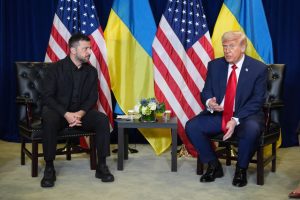
Following the Trump Zelensky meeting, President Trump posted on Truth Social expressing confidence that Ukraine could recover all territory lost to Russia. “I think Ukraine, with the support of the European Union, is in a position to fight and WIN all of Ukraine back in its original form,” he declared, representing a complete reversal from his earlier skepticism about Ukrainian military capabilities.
The Trump Zelensky meeting outcomes suggest a fundamental reassessment of the conflict’s trajectory, with Trump now advocating for restoration of Ukraine’s original borders. “With time, patience, and the financial support of Europe and, in particular, NATO, the original Borders from where this War started, is very much an option,” he added in his social media statement.
NATO Military Support and Spending Commitments
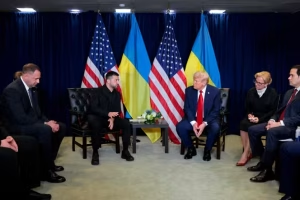
The Trump Zelensky meeting discussions emphasized increased NATO military cooperation and defense spending commitments. Trump praised the alliance for ramping up military expenditures, stating, “We are very strong toward NATO. NATO has stepped up. You know, when they went from 2% to 5% that was great unity,” referring to new military spending targets.
However, regarding direct US military involvement in supporting NATO allies who engage Russian aircraft, Trump indicated that American participation would depend on specific circumstances, suggesting a measured approach despite his overall endorsement of aggressive defensive measures discussed during the Trump Zelensky meeting.
Putin Relationship Deterioration
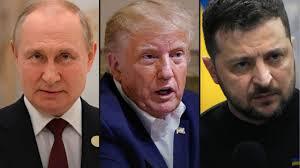

The Trump Zelensky meeting revealed the President’s growing disillusionment with Russian President Vladimir Putin. When questioned about his current trust in Putin, Trump responded cryptically, “I will let you know in about a month,” indicating ongoing uncertainty about the relationship’s future direction.
Trump’s comments following the Trump Zelensky meeting mark the latest in a series of reversals on Ukraine policy, including his initial pivot toward peace talks with Putin earlier this year that surprised many allies. The President acknowledged that he had previously “counted on a bond with Putin to bring an end to the three-and-a-half-year-old war, but unfortunately, that relationship didn’t mean anything.”
Economic Assessment and Strategic Analysis
The Trump Zelensky meeting prompted the President to reassess Russia’s economic and military position. Trump stated he had changed his view “after getting to know and fully understand the Ukraine/Russia Military and Economic situation and, after seeing the Economic trouble it is causing Russia.”
Following the Trump Zelensky meeting analysis, Trump characterized Russia as being in “BIG Economic trouble” and described this as an opportune moment for Ukrainian military action. His assessment suggests that prolonged conflict has significantly weakened Russia’s strategic position and economic stability.
Military Capability Reassessment
The Trump Zelensky meeting discussions influenced Trump’s evaluation of Russian military capabilities. He now describes Russia as “fighting aimlessly” after more than three years of warfare and characterizes the country as a “paper tiger” rather than a serious nuclear threat.
This dramatic shift in perception following the Trump Zelensky meeting represents a complete reversal from Trump’s previous assessment when he told Zelensky during a February Oval Office meeting that “you don’t have the cards” to defeat Russia.
Alaska Summit Failure Impact
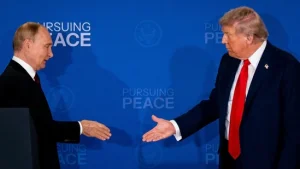

Trump’s hardened stance following the Trump Zelensky meeting stems partly from disappointment over failed diplomacy with Putin. The President revealed that an August 15 summit in Alaska failed to produce any breakthrough and was instead followed by increased Russian military attacks.
The unsuccessful Alaska summit appears to have been a turning point that influenced Trump’s approach during the Trump Zelensky meeting, leading to his more confrontational stance toward Moscow and stronger support for Ukrainian territorial integrity.
Strategic Implications and Future Policy
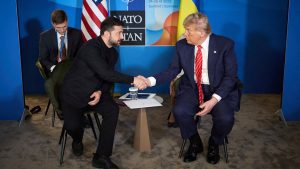

The Trump Zelensky meeting outcomes suggest a significant realignment in US-Russia relations and NATO policy toward airspace violations. Trump’s endorsement of shooting down Russian aircraft represents a potentially dangerous escalation that could lead to direct military confrontation between NATO forces and Russian military assets.
The policy shift emerging from the Trump Zelensky meeting also indicates renewed American commitment to Ukrainian territorial sovereignty and willingness to support long-term military efforts to restore pre-war borders. This represents a substantial departure from earlier calls for negotiated settlements that might have required territorial concessions.
International Implications
The Trump Zelensky meeting declarations will likely influence NATO planning and rules of engagement regarding Russian airspace violations. European allies must now consider whether to implement the aggressive defensive posture endorsed by Trump while calculating potential risks of military escalation with nuclear-armed Russia.

